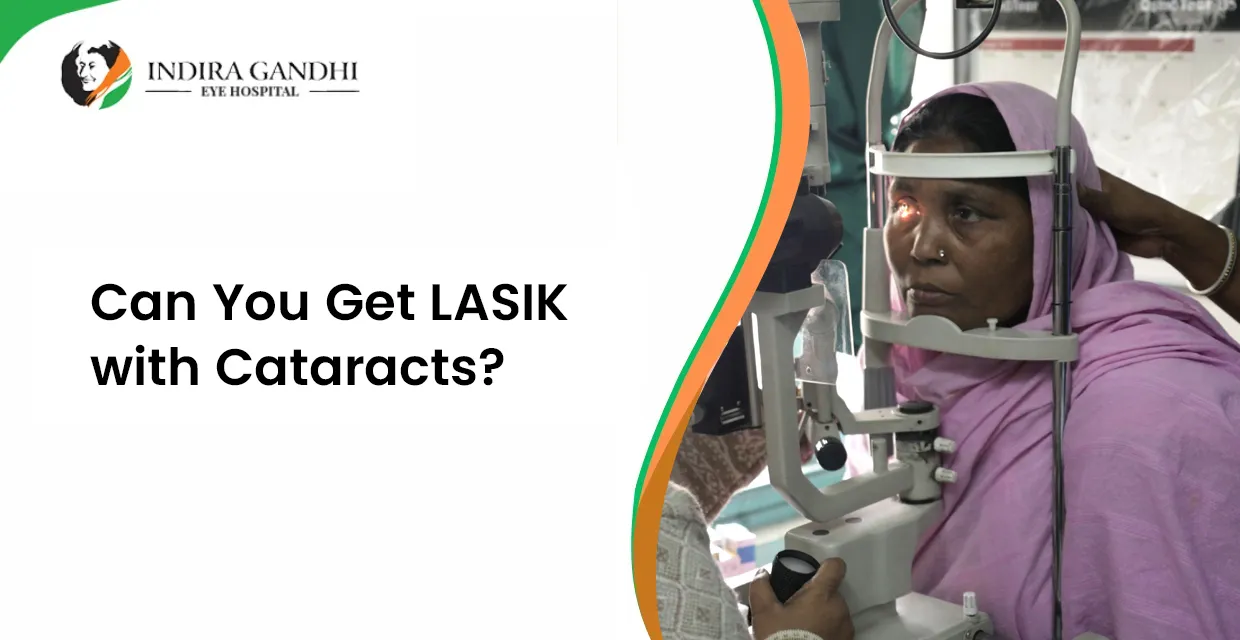In the realm of vision correction, LASIK (Laser-Assisted In Situ Keratomileusis) stands out as a highly effective surgical procedure designed to reduce dependency on prescription eyeglasses or contact lenses. As one of the most popular and well-researched forms of refractive surgery, LASIK corrects vision issues such as myopia (nearsightedness), hyperopia (farsightedness), and astigmatism by reshaping the cornea using a laser. However, patients often wonder about the relationship between LASIK and cataract surgery, particularly regarding the treatment process and long-term eye health.
LASIK Surgery: A Closer Look
How LASIK Works
LASIK involves the use of a specialised laser to carefully alter the shape of the cornea—the clear, rounded dome at the front of the eye—to improve how light rays are focused on the retina. The procedure includes the creation of a thin flap in the cornea, allowing the surgeon to perform the necessary reshaping.
Benefits of LASIK
Improved Visual Acuity: Most patients achieve 20/25 vision or better after the procedure.
Quick Recovery: Recovery times are short, with most patients experiencing significant improvements in vision almost immediately after surgery.
Minimal Discomfort: The procedure is associated with little to no pain and minimal postoperative discomfort.
Cataract Surgery: An Overview
Cataracts develop when the natural lens of the eye becomes cloudy, often due to aging, leading to a decrease in vision quality. Cataract surgery involves the removal of the cloudy lens and the placement of an artificial lens called an intraocular lens (IOL) to restore clear vision.
Procedure Details
Lens Removal: The clouded lens is removed through a process called phacoemulsification, where it is emulsified with ultrasonic vibrations and aspirated from the eye.
IOL Implantation: A clear, artificial lens is then implanted in the eye, restoring transparency and improving vision.
Interaction Between LASIK and Cataract Surgery
Patients who have undergone LASIK may have concerns about the feasibility of future cataract surgery. Here, we address these interactions and considerations:
Impact on Lens Calculations
Preoperative Measurements: Prior LASIK surgery can affect the curvature of the cornea, which in turn impacts the measurements used to select the appropriate power for the IOL.
Advanced Techniques: With modern technology, eye surgeons can accurately measure the corneal properties and calculate the correct IOL power even after LASIK.
Surgical Considerations
Custom IOLs: Custom-made IOLs can be used to match the specific refractive changes made during LASIK, ensuring optimal post-cataract surgery vision outcomes.
Expertise Required: It is essential to choose a surgeon experienced in performing cataract surgery on patients who have previously had LASIK.
Conclusion
Both LASIK and cataract surgeries are advanced eye procedures that significantly enhance vision quality. For patients with a history of LASIK, cataract surgery requires specialised planning and skilled execution to ensure the best outcomes. At Indira Gandhi Eye Hospitals, use of advanced imaging techniques and customised IOLs allows our surgeons to effectively manage cataract surgery post-LASIK, leading to successful restoration of vision. As we advance in medical technology, the synergy between different vision correction methods continues to improve, offering patients clearer vision and a better quality of life. For those seeking LASIK surgery or cataract surgery in Gurgaon, Indira Gandhi Eye Hospitals provides top-tier, cutting-edge care.


